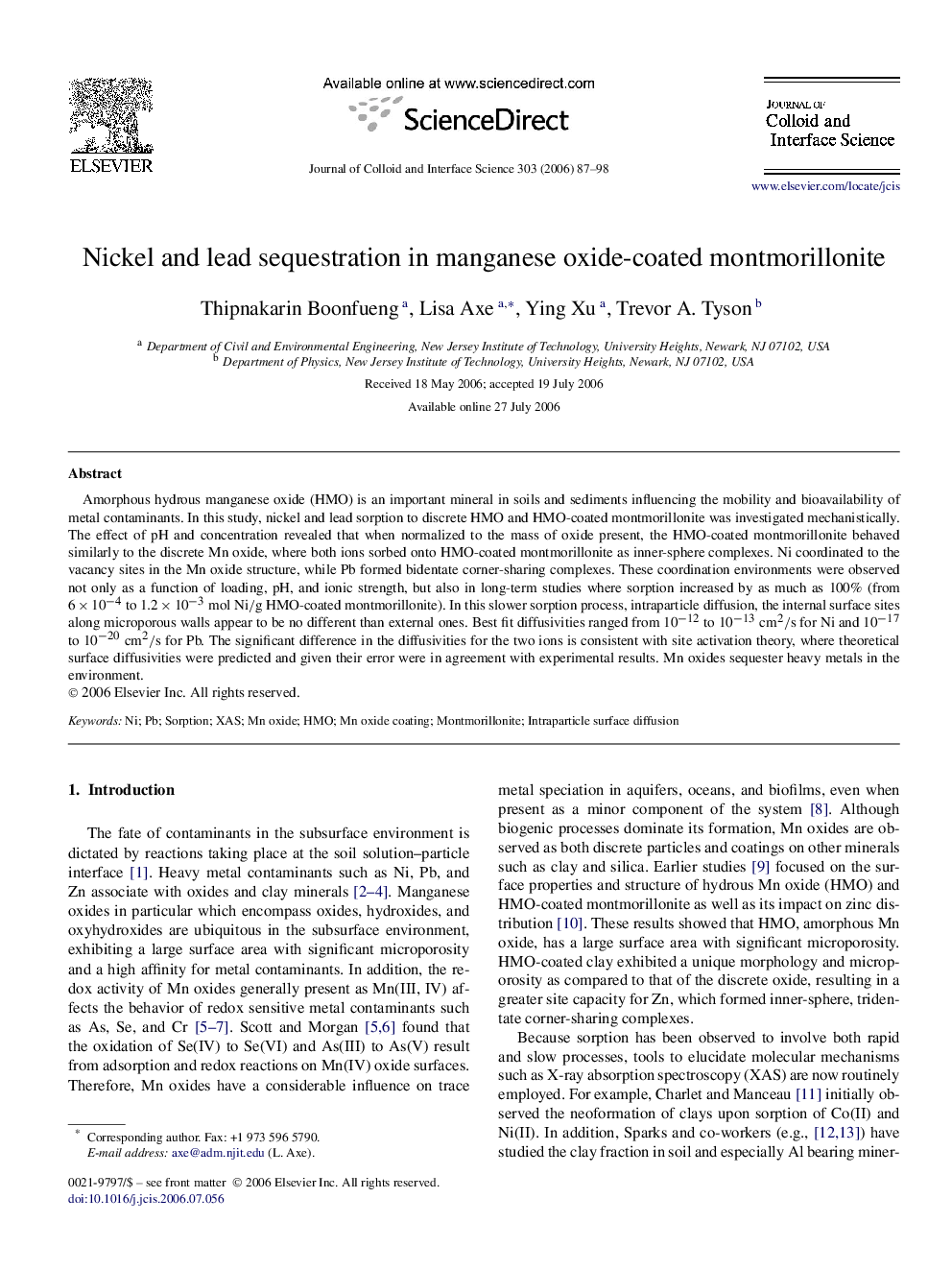| Article ID | Journal | Published Year | Pages | File Type |
|---|---|---|---|---|
| 612796 | Journal of Colloid and Interface Science | 2006 | 12 Pages |
Amorphous hydrous manganese oxide (HMO) is an important mineral in soils and sediments influencing the mobility and bioavailability of metal contaminants. In this study, nickel and lead sorption to discrete HMO and HMO-coated montmorillonite was investigated mechanistically. The effect of pH and concentration revealed that when normalized to the mass of oxide present, the HMO-coated montmorillonite behaved similarly to the discrete Mn oxide, where both ions sorbed onto HMO-coated montmorillonite as inner-sphere complexes. Ni coordinated to the vacancy sites in the Mn oxide structure, while Pb formed bidentate corner-sharing complexes. These coordination environments were observed not only as a function of loading, pH, and ionic strength, but also in long-term studies where sorption increased by as much as 100% (from 6×10−46×10−4 to 1.2×10−3 mol Ni/g1.2×10−3 mol Ni/g HMO-coated montmorillonite). In this slower sorption process, intraparticle diffusion, the internal surface sites along microporous walls appear to be no different than external ones. Best fit diffusivities ranged from 10−12 to 10−13 cm2/s10−13 cm2/s for Ni and 10−17 to 10−20 cm2/s10−20 cm2/s for Pb. The significant difference in the diffusivities for the two ions is consistent with site activation theory, where theoretical surface diffusivities were predicted and given their error were in agreement with experimental results. Mn oxides sequester heavy metals in the environment.
Graphical abstractProposed Pb and Ni sorption configurations on hydrous manganese oxide (HMO) show: (a) Pb forms bidentate corner-sharing complexes with Pb–O at 2.30 Å and Pb–Mn at 3.56 Å; (b) Ni coordinates to the vacancy site of Mn oxide with Ni–O at 2.04 Å, Ni–Mn at 3.32 Å, and Ni–Mn at 3.49 Å.Figure optionsDownload full-size imageDownload high-quality image (73 K)Download as PowerPoint slide
